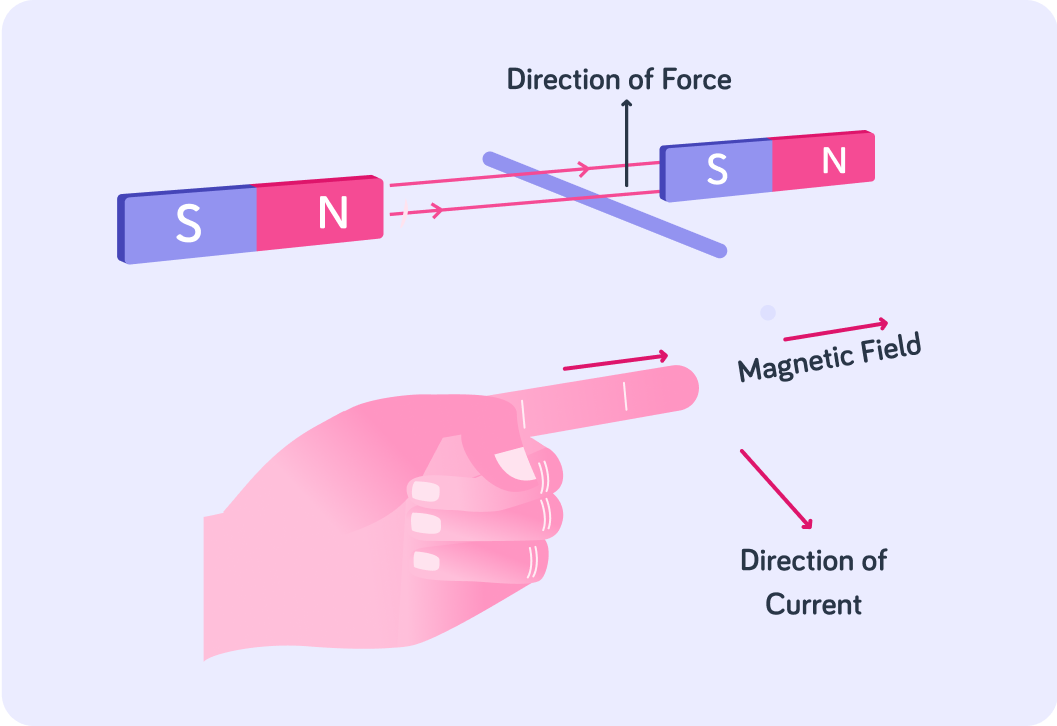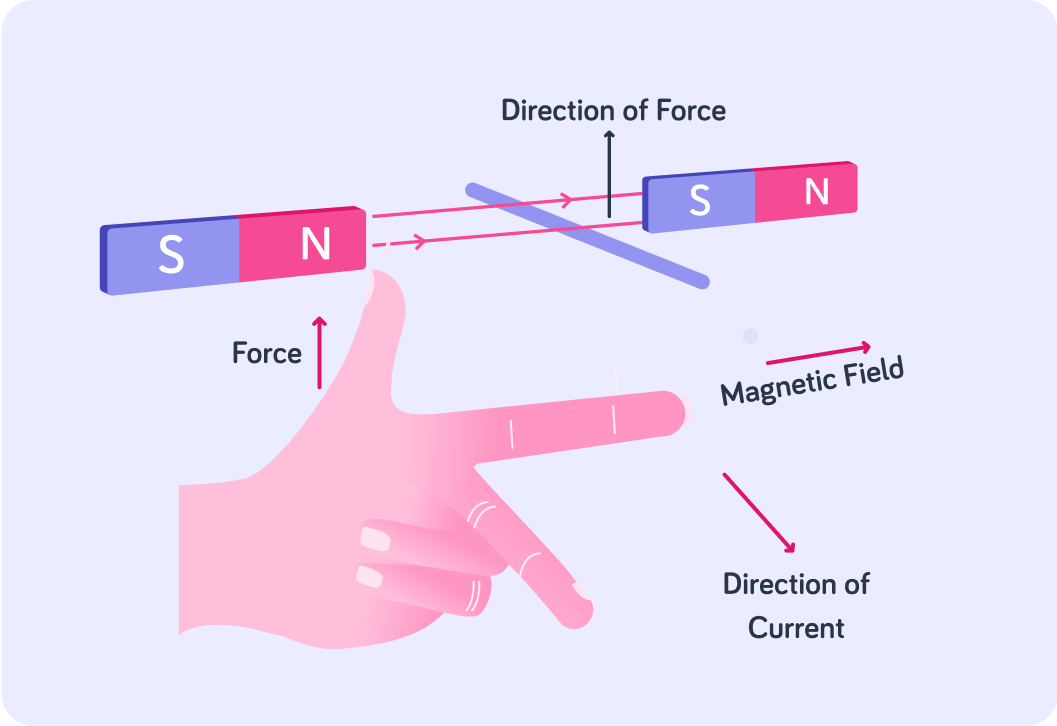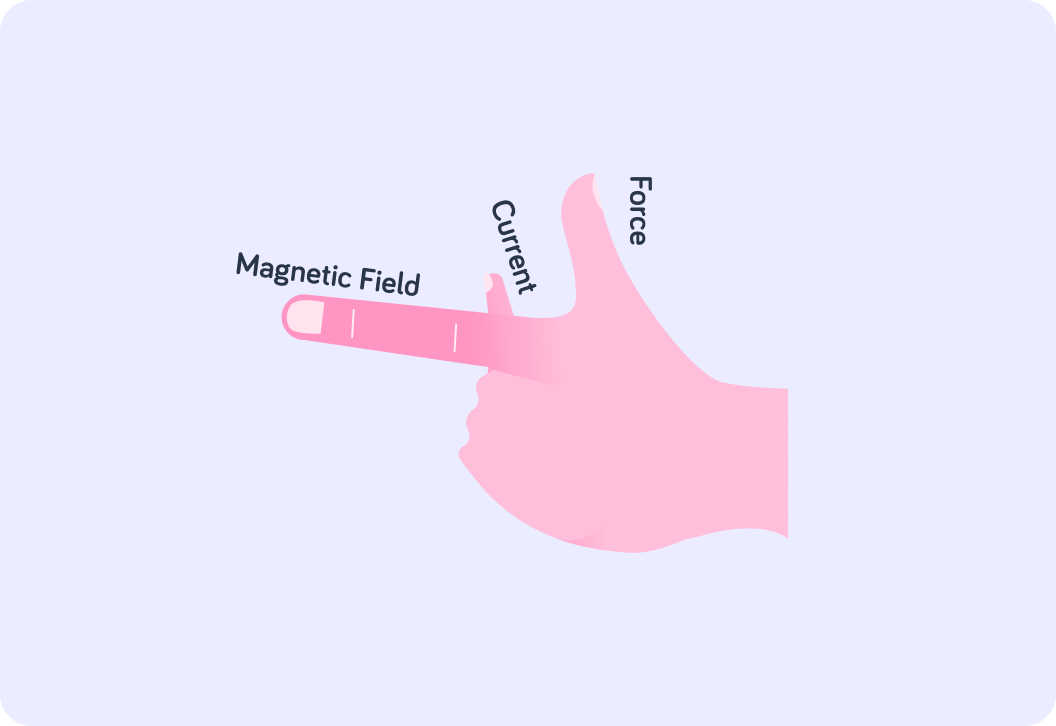YOU ARE LEARNING:
Fleming’s Left Hand Rule

Fleming’s Left Hand Rule
We can find the direction of the force produced by a current-carrying conductor in an external magnetic field using Fleming's Left Hand Rule.
A current-carrying conductor generates a magnetic field around itself. When placed into another magnetic field, the interaction between the field creates a force. We can use Fleming's left hand rule to help us find out which direction the force acts in.
Using your left hand, point out your index finger. Have a look at the diagram. What does the direction your index finger is pointing in represent?
A) The direction the current is flowing in. B) The direction the magnetic field is acting in. C) The direction of the force on the conductor.
Answer A, B or C.


Now point your middle finger at 90 degrees to your first finger. What does the direction your middle finger is pointing in represent?
A) The direction the current is flowing in. B) The direction the magnetic field is acting in. C) The direction of the force on the conductor.
Answer A, B or C.


Finally, point your thumb up, perpendicular to the other two fingers, like you are giving a weird thumbs up. What does the direction your thumb is pointing in represent?
A) The direction the current is flowing in. B) The direction the magnetic field is acting in. C) The direction of the force on the conductor.


Remember this is for the left hand! This rule won't work if you use your right hand.
The index (first) finger represents the direction of the magnetic field. The middle (second) finger represents the direction of the current. The thumb represents the direction of the force (or thrust) produced.

Turn your hand so that the current points in the opposite direction, away from you rather than towards you. What effect does this have on the direction of the magnetic field?
A) It doesn't change. B) It reverses.


If we change the direction of the electrical current, it will change the direction of the magnetic field.
You can see that if you turn your wrist so that your middle finger (the current) no longer points towards you, but points away from you. This also changes the direction you index finger (the magnetic field) is pointing in.

Imagine we now turn the direction of the magnetic field by 90 degrees to the right. What effect would that have on the direction of the force exerted?
A) It changes direction by 90 degrees. B) It doesn't change direction.


The direction of the magnetic field directly changes the direction of the force exerted.
If you turn your hand 90 degrees, so that your index finger (the magnetic field) points upwards, you will see that your thumb (the force) has also changed direction by 90 degrees. It is now pointing left, rather than pointing straight up. The current, however, is still pointing in the same direction.

So we can use Fleming's left hand rule to show the directions of the current, the magnetic field, and the force experienced for a current carrying conductor in an external magnetic field.
We can also use it to figure out how changing the direction of one of these variables affects the others.
